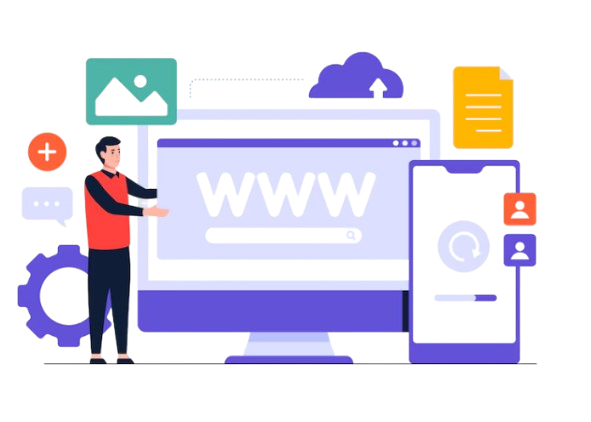Creating Accessible Websites is about more than just ticking off legal boxes—it’s about fostering an inclusive digital landscape where everyone has equal access to information and services. By going beyond compliance and making accessibility a core value, businesses can build stronger connections with their audiences, enhance user experience, and set themselves apart as leaders in social responsibility.
In today’s digital age, websites serve as the front door to businesses, services, and information. As the internet becomes an integral part of our daily lives, it’s essential that everyone, regardless of ability, can access and navigate websites with ease. Creating Accessible Websites is not just a legal obligation—it’s a moral and business imperative. This blog explores the importance of Accessible Websites, the benefits of going beyond mere compliance, and practical strategies for making websites truly inclusive.
The Importance of Creating Accessible Websites
The concept of Accessible Websites refers to the design and development practices that ensure all users, including those with disabilities, can perceive, understand, navigate, and interact with online content. Disabilities can range from visual and auditory impairments to cognitive and motor challenges, each requiring specific accommodations.
Legal frameworks like the Americans with Disabilities Act (ADA) and the Web Content Accessibility Guidelines (WCAG) have set standards to ensure websites are accessible. However, the importance of Accessible Websites extends far beyond legal compliance:
- Inclusivity and Social Responsibility: By creating Accessible Websites, businesses demonstrate their commitment to inclusivity and social responsibility. They open their doors to a broader audience, ensuring that no one is left behind.
- Expanding Audience Reach: An estimated 15% of the world’s population lives with some form of disability. By making your website accessible, you tap into a significant and often underserved market, expanding your reach and potential customer base.
- Improving User Experience for All: Accessible Websites often provide a better overall user experience. Features like easy navigation, clear content structure, and alternative text for images benefit all users, not just those with disabilities.
- Enhancing SEO and Visibility: Many accessibility practices align with search engine optimization (SEO) best practices. By creating Accessible Websites, you’re also improving your website’s visibility and ranking on search engines.
- Building Brand Reputation: Businesses that prioritize accessibility are viewed more favorably by customers, leading to increased trust, loyalty, and positive brand perception.
Beyond Compliance: Making Accessibility a Core Value
While complying with accessibility standards is essential, the real impact comes when businesses embrace accessibility as a core value rather than a checklist item. Here’s how you can go beyond compliance to create truly Accessible Websites:

1. Understand the Diverse Needs of Users
Creating Accessible Websites requires a deep understanding of the diverse needs of your users. Conduct user research that includes people with disabilities to gain insights into their challenges and preferences. This will help you design solutions that cater to a wide range of needs.
2. Adopt a User-Centered Design Approach
User-centered design (UCD) places the needs and experiences of users at the forefront of the design process. In the context of Accessible Websites, UCD involves considering accessibility from the outset, rather than retrofitting it later. This approach ensures that accessibility is woven into the fabric of your website, leading to more intuitive and inclusive designs.
3. Implement Universal Design Principles
Universal design is the practice of creating products and environments that are inherently accessible to all people, regardless of age, ability, or status. By applying universal design principles, you can create Accessible Websites that are usable by the broadest range of people possible.
4. Provide Alternative Content
One of the key strategies for creating Accessible Websites is to provide alternative content for those who cannot access standard content. This includes adding alternative text for images, providing transcripts for videos and audio content, and ensuring that all interactive elements are keyboard accessible.
5. Test with Assistive Technologies
To ensure your website is truly accessible, test it with a variety of assistive technologies such as screen readers, voice recognition software, and magnification tools. Regular testing helps identify potential barriers and provides insights into how different users experience your site.
6. Continuously Improve and Update
Accessibility is not a one-time task but an ongoing commitment. As your website evolves, regularly review and update its accessibility features. Stay informed about the latest accessibility standards and best practices to ensure your site remains inclusive over time.
Conclusion
Creating Accessible Websites is about more than just ticking off legal boxes—it’s about fostering an inclusive digital landscape where everyone has equal access to information and services. By going beyond compliance and making accessibility a core value, businesses can build stronger connections with their audiences, enhance user experience, and set themselves apart as leaders in social responsibility.
For businesses looking to enhance their online presence, tanbits offers web design and development services that prioritize accessibility, ensuring that your website is not only compliant but truly inclusive.
In a world where the digital divide still exists, businesses that prioritize Accessible Websites will lead the charge in creating a more connected and equitable online experience for all. Let’s move beyond compliance and make accessibility an integral part of the digital future.
BACK










